Terrace container gardens are popular for urban dwellers looking to bring greenery into their outdoor spaces. However, like any gardening, there can be challenges along the way. Maintaining a thriving terrace container garden can be a rewarding experience, but it’s not without challenges. From pests and diseases to environmental factors and even human error, many common problems can arise. However, these issues can be overcome with the right prevention measures, timely treatment, and creative solutions.
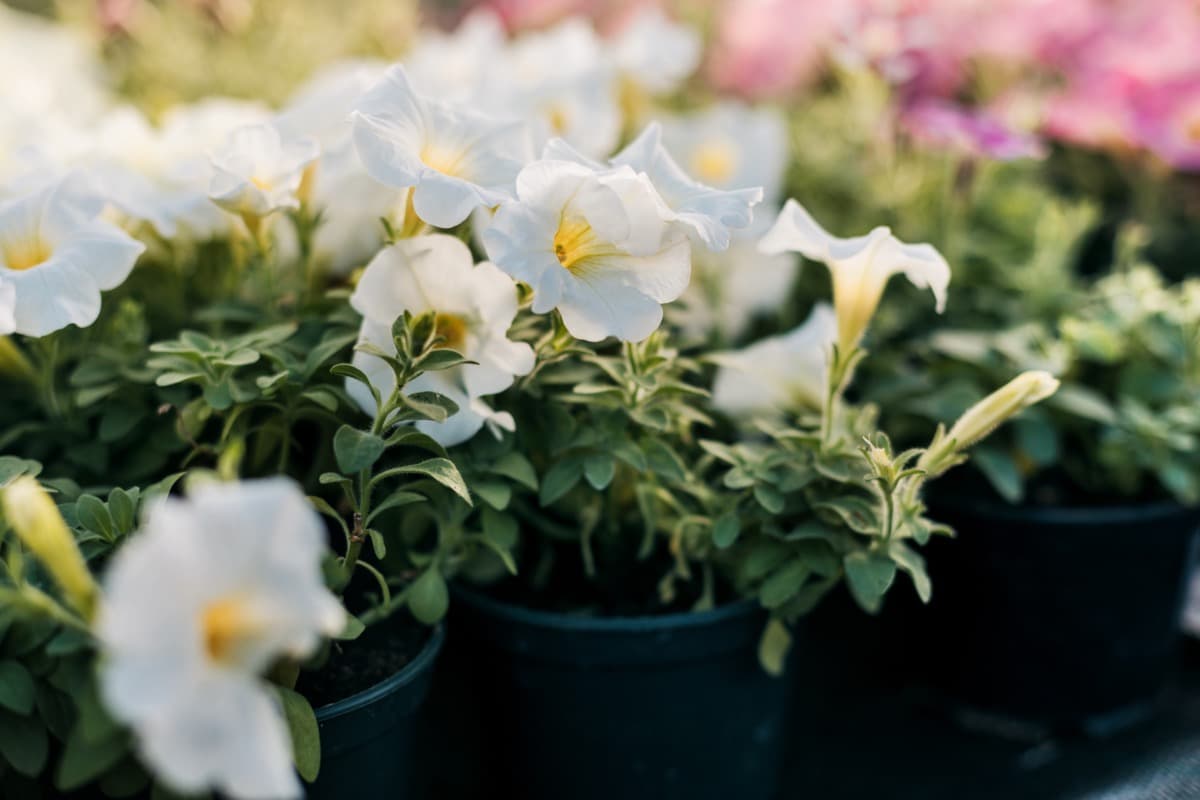
12 Common Problems with Terrace Container Gardens
How to Prevent Waterlogging in Terrace Container Garden
It occurs when excessive water accumulates in the soil and cannot drain properly. This can lead to root rot, nutrient deficiencies, and poor plant health. However, several ways exist to prevent waterlogging and ensure your plants thrive. Additionally, consider using a well-draining potting mix containing perlite or vermiculite. Monitoring watering practices is crucial in preventing waterlogging. Only water when the top inch of soil feels dry to touch, as overwatering can contribute to this issue.
Consider using a moisture meter if you’re unsure about the moisture level in your containers. Furthermore, avoid overcrowding your pots as it restricts air circulation and causes moisture buildup. Regularly inspect your plants for signs of stress, such as yellowing leaves or wilting – these could indicate issues with drainage. Consider creating a drainage layer at the bottom of larger containers by adding rocks or pebbles before filling it with potting mix. This layer helps excess water flow away from plant roots.
Dealing With Pests in Terrace Container Garden
Keep an eye out for early signs of infestation and take action immediately. Regularly inspect your plants for any unusual spots or holes in the leaves. You can also introduce beneficial insects like ladybugs or lacewings that feed on common garden pests. If you notice pests invading your terrace garden, it’s important to identify them correctly before taking any measures.
In case you missed it: How to Grow Tabasco Peppers from Seeds: At Home, In Pots, Raised Beds, Terraces, and Backyard
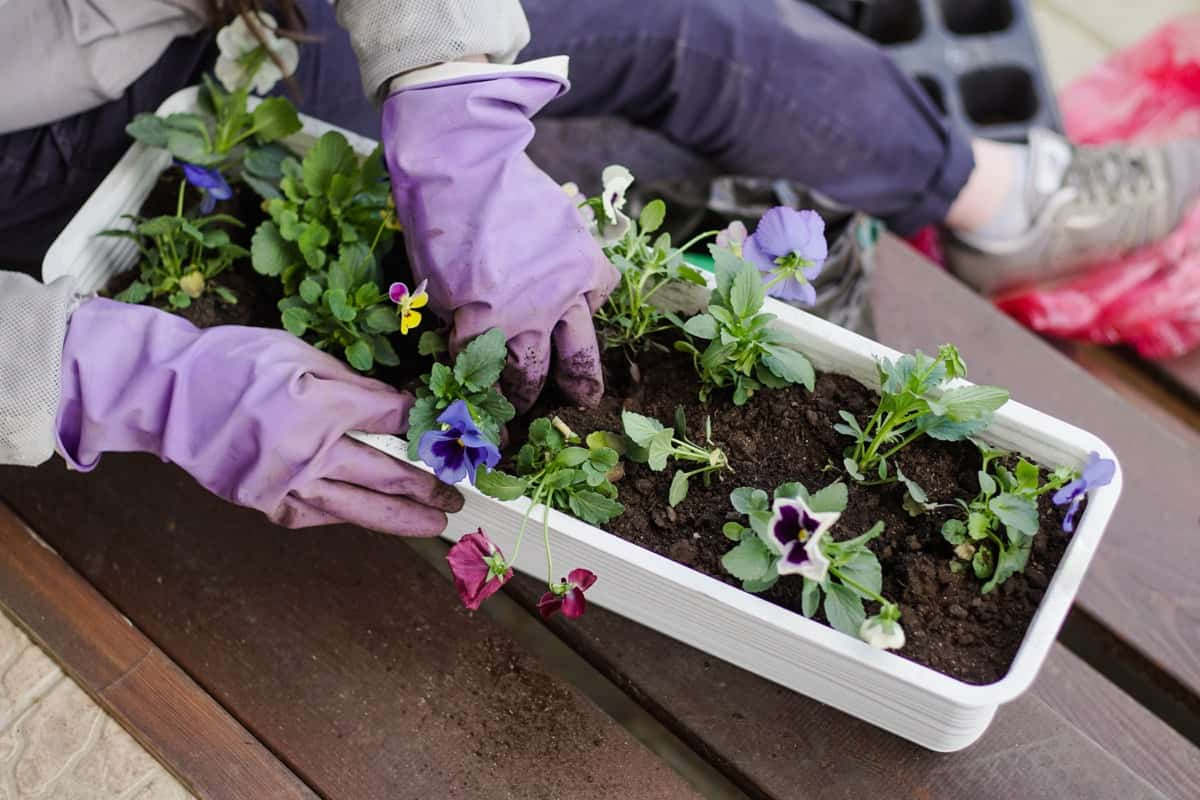
Different pests require different treatments, so knowing what you’re dealing with will help you find the most effective solution. One option is to use organic pesticides or insecticidal soap to control pest populations without harming beneficial insects or contaminating the environment.
Managing Nutrient Deficiencies in Terrace Container Garden
Proper nutrition is important for the healthy growth of plants in a terrace container garden. However, nutrient deficiencies can sometimes occur, leading to stunted growth and poor overall health. It’s important to identify which nutrients your plants lack. Common signs of deficiency include yellowing leaves, slow or stunted growth, and leaf discoloration.
Once you’ve identified the deficient nutrients, several ways exist to address the issue. One option is using organic fertilizers that contain the necessary nutrients. These can be added directly to the soil or mixed with water for easy application. Another method is foliar feeding, where diluted liquid fertilizer is sprayed onto plant leaves.
This allows for the quick absorption of nutrients by bypassing any soil deficiencies. Additionally, consider incorporating compost into your gardening routine. Compost adds essential nutrients and improves soil structure and fertility over time. Regularly monitor your plants’ progress and adjust fertilization accordingly. It’s important not to over-fertilize as this can lead to nutrient imbalances or even burn the roots of your plants.
Preventing Fungal Diseases in Terrace Container Garden
Fungal diseases can quickly wreak havoc on your terrace container garden, causing wilting, discoloration, and even death of your beloved plants. You can take several preventive measures to keep these pesky fungi at bay. First, ensure you provide adequate air circulation for your plants. Good airflow helps prevent moisture buildup, creating an ideal environment for fungal growth.
Keep a distance between your containers to allow enough space for air to circulate freely. Another important step is to avoid overwatering. Excess moisture not only leads to waterlogging but also encourages fungal diseases. Water your plants only when necessary, and make sure the soil has proper drainage.
Look out for yellowing leaves, spots or lesions on the foliage, or powdery coatings – these are all potential indicators of a fungal problem. If you spot any issues, promptly remove infected plant parts and dispose of them properly. Using organic fungicides can also effectively prevent fungal diseases in terrace gardens. These products contain natural ingredients that help control the spread of fungi without harming beneficial insects or pollinators.
Addressing Drainage Issues in Terrace Container Garden
Excess water can accumulate in the containers without adequate drainage, leading to root rot and other plant diseases. Choose containers with drainage holes. These holes allow excess water to escape freely, preventing waterlogging. Next, make sure to use well-draining soil mixtures that contain perlite or vermiculite.
In case you missed it: How to Grow Ghost Peppers from Seed: At Home, in Pots, Raised Beds, Terrace, and Backyard
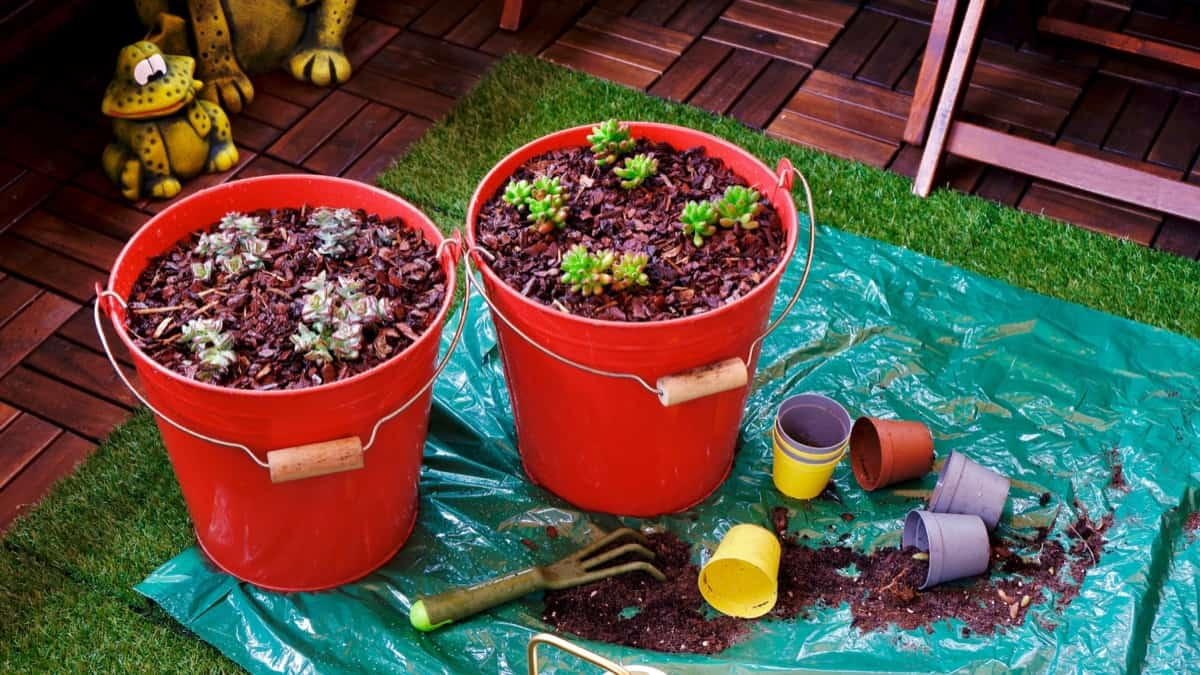
These additives improve soil structure and help excess water flow through more easily. Regularly monitor the moisture level of your plant’s soil using a moisture meter or by simply sticking your finger into it. If the soil feels consistently damp or soggy even after watering moderately, it’s a sign of poor drainage.
In cases where you notice standing water in your containers after heavy rainfall or excessive watering, consider propping up one side slightly by placing small blocks under them. This slight tilt will encourage better runoff and prevent stagnant water from accumulating around plant roots. Remember not to overwater your plants, as this can exacerbate drainage issues. Instead, practice moderation when watering and allow the top inch or so of soil to dry out between watering sessions.
Managing Extreme Temperatures in Terrace Container Garden
One of the challenges that terrace container gardeners often face is managing extreme temperatures. Whether it’s scorching hot summers or cold winters, these temperature extremes can harm your plants if not properly managed. During hot summer days, the intense heat can cause dehydration and stress to your plants. To combat this, consider providing shade for your containers by using umbrellas or creating temporary structures with shade cloth.
On the other hand, during harsh winters, frost and freezing temperatures can harm plant health. Insulating their roots is an effective way to protect your plants from cold snaps. You can do this by wrapping bubble wrap around the containers or placing them inside larger pots filled with straw or mulch. Another option is to bring sensitive plants indoors during extreme weather conditions. This will provide them with a more controlled environment without exposure to severe temperature fluctuations.
Preventing Overwatering in Terrace Container Garden
Overwatering can be a common problem in terrace container gardens, and it’s important to address this to ensure your plants’ health and success. Ensure that your containers have proper drainage holes at the bottom. This prevents excess water from escaping and from accumulating around the roots. Before watering, check if the soil is already moist by inserting your finger about an inch deep into the soil. If it feels damp, hold off on watering until it dries out.
Instead of shallow daily watering, give your plants a good soak once or twice a week. This encourages deep-root growth and helps them become more resilient to drought conditions. Consider using self-watering containers that have built-in reservoirs for storing excess water. These containers provide consistent moisture levels without risking overwatering. Be mindful of rainfall patterns and adjust your watering schedule accordingly. You may need to reduce or skip regular watering sessions during rainy periods.
Controlling Weed Growth in Terrace Container Garden
One method is to regularly hand-pull weeds as soon as they appear. Be sure to remove the entire root system to minimize regrowth. Another option is using mulch or ground cover plants to suppress weed growth. Apply a layer of organic mulch around your plants to smother any emerging weeds.
You may need to employ herbicides specifically formulated for container gardens for more stubborn weeds. However, exercise caution when using these products and follow the instructions carefully to avoid harming desirable plants. Regular maintenance is key in preventing weed growth in your terrace container garden. Look for new sprouts and promptly remove them before they can establish themselves.
In case you missed it: Tips for Using Terracotta Pots in Your Garden: Benefits and Ideas for Beginners
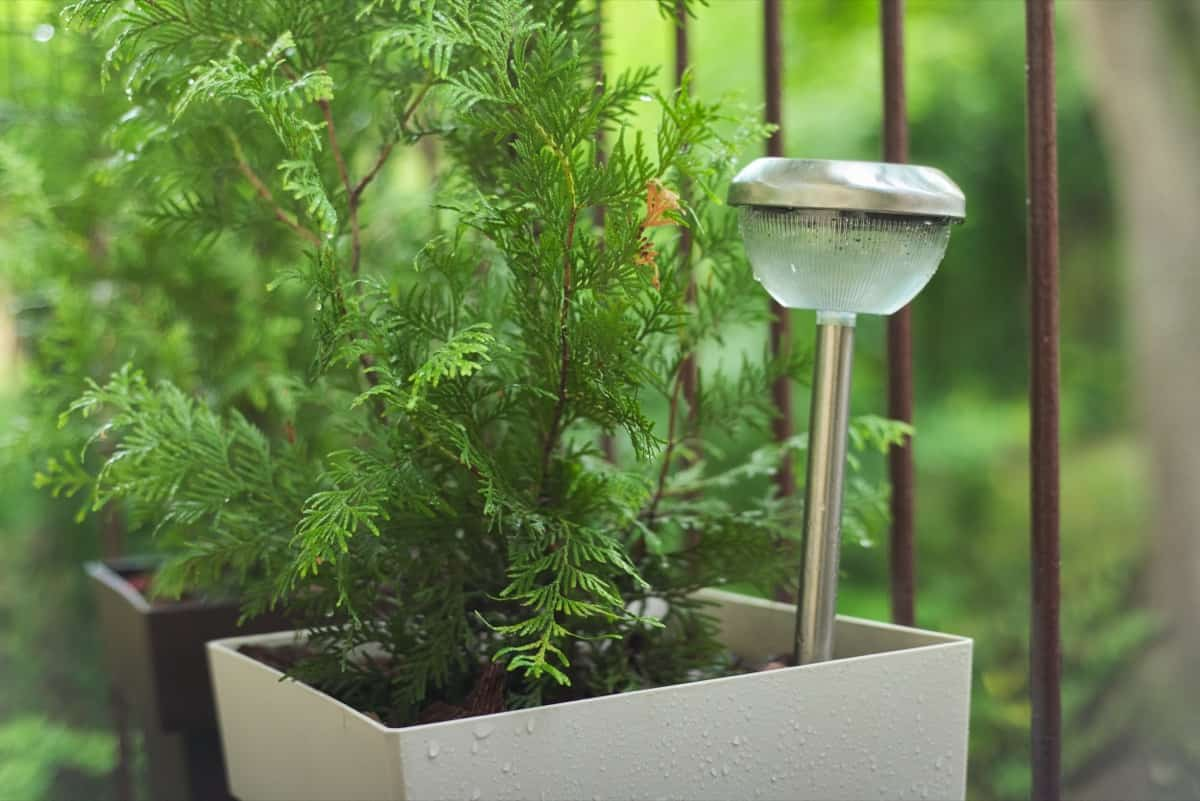
Addressing Poor Plant Growth in Terrace Container Garden
Poor plant growth can be frustrating for any gardener, especially when you’ve spent time and effort creating a beautiful terrace container garden. One common reason for poor plant growth is inadequate sunlight. Ensure your containers are placed in an area that receives sufficient sunlight throughout the day. Some plants may require more shade, so do some research on the specific needs of your plants.
Overwatering or underwatering can both lead to stunted or weak plant growth. Check the moisture levels of your soil regularly and adjust your watering schedule accordingly. Nutrient deficiencies can also contribute to poor plant growth. Ensure that you’re providing adequate nutrients through organic fertilizers or compost. Regularly monitor the nutrient levels in your soil and make adjustments as needed.
Inadequate drainage is another potential culprit for poor plant growth. If water is sitting around the roots of your plants, it causes root rot and hinders their overall development. Improve drainage by adding perlite or vermiculite to your potting mix. Pests could be affecting the health and growth of your plants. Inspect them regularly for signs of infestation, such as chewed leaves or sticky residue on leaves.
Choosing the Right Container Size for Terrace Gardening
Choosing the right container size is crucial for successful terrace gardening. The container’s size directly impacts your plants’ growth and development. While it may be tempting to choose oversized containers, thinking they will provide more space for roots to grow, this can lead to waterlogging and poor drainage.
On the other hand, using containers that are too small restricts root growth and hampers nutrient uptake. It’s important to strike a balance and choose a container size that allows adequate room for root expansion and moisture control. Consider the type of plants you plan to grow when selecting container sizes. Small herbs or flowers may thrive in smaller pots, while larger vegetables or fruit-bearing plants require larger containers.
In case you missed it: Growing Potatoes in Containers/Pots: DIY Guide for Beginners
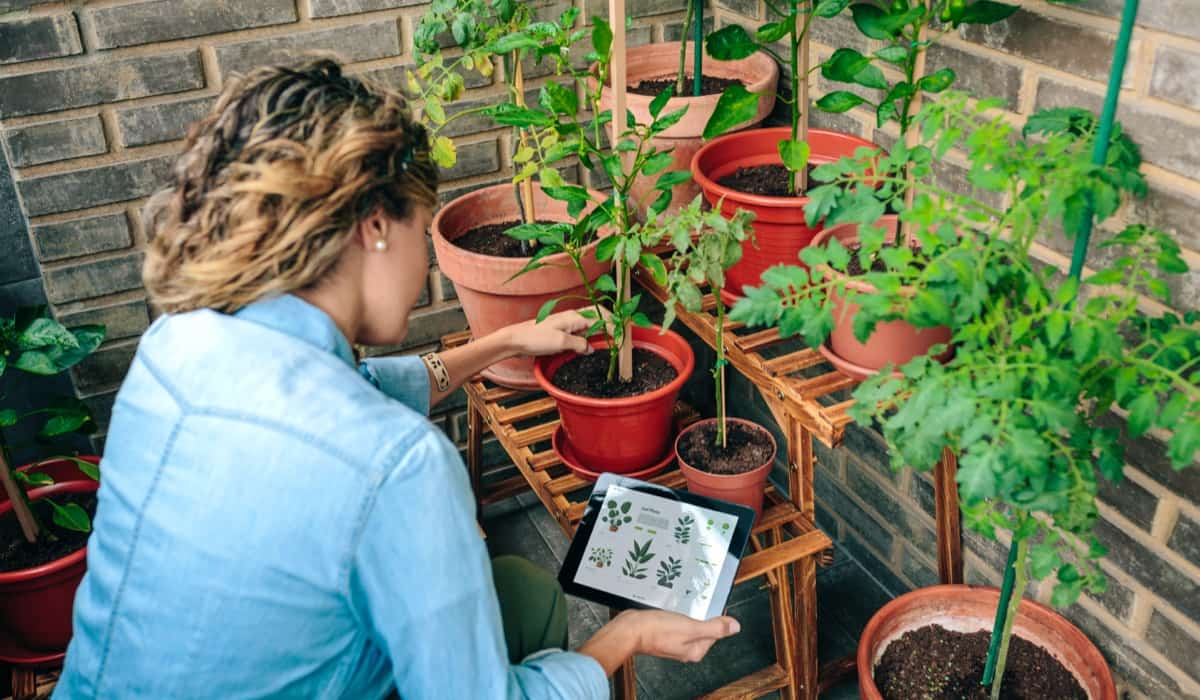
Additionally, take into account your available space on the terrace. If you have limited area, opt for taller planters or vertical gardening solutions such as hanging baskets or wall-mounted planters. Remember that proper drainage is crucial in preventing waterlogging issues. Ensure each container has good drainage holes at the bottom, allowing excess water to escape freely.
Managing Soil Erosion in Terrace Container Garden
Soil erosion can be a common problem in terrace container gardens, especially if the garden is exposed to strong winds or heavy rainfall. When soil erodes, it not only affects the stability of your plants but also leads to nutrient loss and poor plant growth. One effective way to prevent soil erosion is by using mulch. Mulch also acts as a protective barrier against wind erosion. Another technique for managing soil erosion is terracing.
Creating terraces with retaining walls or raised beds helps slow water flow and reduces the likelihood of runoff carrying away precious topsoil. Additionally, terracing provides stability for your containers while minimizing erosion risk. Choosing appropriate plants for your terrace container garden can help combat soil erosion.
Opting for deep-rooted plants that anchor themselves well into the ground will help hold the soil together and prevent it from being washed away during heavy rainfall. Regularly inspecting your garden for signs of erosion is crucial in preventing further damage. If you notice any exposed roots or bare patches of earth, add additional layers of mulch or reinforce existing retaining walls.
Choosing the Right Plants for Terrace Container Gardening in a Windy Area
Choosing the right plants for your terrace container garden in a windy area ensures their survival and flourishing. Strong winds can easily damage delicate plants, so selecting more resilient species that can withstand these conditions is essential. When choosing plants for a windy terrace, opt for those with sturdy stems and compact growth habits.
Look for varieties of shrubs or small trees with thick foliage or grasses that sway gracefully in the wind without breaking. Additionally, selecting plants with smaller leaves can also help reduce wind resistance. Plants such as lavender, rosemary, or sage have narrow leaves that allow air to pass through them more easily.
In case you missed it: Fantastic Heat-Loving Plant Combos for Containers
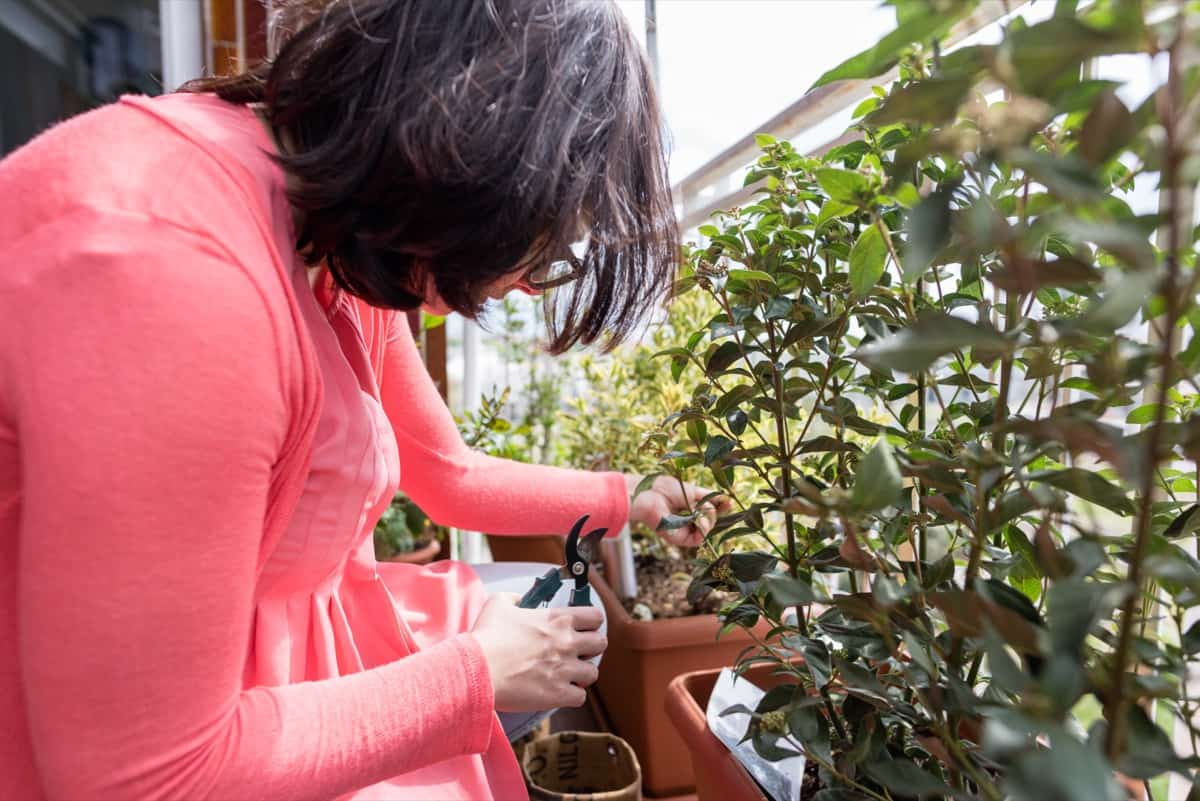
Incorporating climbers into your terrace garden can be beneficial too. When trained on trellises or walls, these vertical growers add height and create a barrier against strong gusts of wind. Don’t forget to use containers with sufficient weight and stability to prevent them from toppling during strong winds. Consider pots made of concrete or stone rather than lightweight plastic options.
Conclusion
Terrace container gardens can be a beautiful and convenient way to bring nature into small spaces. However, they can also present their fair share of challenges. By being aware of common problems such as overwatering, nutrient deficiencies, pests, and diseases, you can take the necessary steps to prevent them from occurring in the first place.
- Broccoli Seed Germination and Selection
- Asparagus Seed Germination and Variety Selection
- Seasonal Flower Gardening: Best Practices for Spring, Summer, Fall, and Winter
- How to Grow Hibiscus from Flower
- Plantation Ideas for Home Decoration: A Beginners Guide
- Flower Garden Designs and Layouts for Beginners
- Planting and Spacing Techniques in Papaya: A Beginner’s Guide
- Growing Gold: Essential Techniques for Planting Pineapples
- How to Make Kalanchoe Plant Bushy: Home Remedies and Solutions
- 11 Reasons Why Your Gardenia is Not Blooming: Home Remedies and Solutions
- Eco Elegance: The Guide to Designing a Drought-Tolerant Landscape
- Gardening on a Slope: Strategies for Hillside Landscaping
- Nourish and Flourish: Top Organic Mulches for Thriving House Plants
- Everything You Want to Know about Indian Mogra Flower: Discover Uses and Growing
- Green Thumb Success: Expert Tips for Cultivating Greenhouse Pumpkins All Year Round
- Maximize Growth & Flavor: The Ultimate Guide to Companion Planting in Herb Gardens
- How to Control Rhododendron Problems Naturally: Home Remedies and Organic Ways to Fix Them
- Natural Magic: The Remarkable Benefits of Cinnamon for Plants
- Best Steps to Revive Dying Tulip with Natural and Organic Treatment
- 10 Reasons Why Your Angel Trumpet is Not Blooming: Remedies and Treatment
- How to Fix Periwinkle Leaf and Flower-Related Problems: Natural Remedies and Solutions
- How to Fix Zinnias Leaf and Flower Problems: Discover Natural and Home Remedies
- Organic Steps to Induce Lemon Tree Flowers: A Comprehensive Guide
- Bloom Booster: Crafting the Perfect Homemade Bougainvillea Fertilizer
- Optimizing Growth: A Guide to Applying NPK Fertilizer for Potted Plants
- 10 Best Homemade Fertilizers for Rubber Plant: DIY Recipes and Application Method
- How to Boost Female Pumpkin Flowers: Effective Steps for More Flowers and High Yields
- Transform Your Indoor Garden: Top Benefits of Pink Salt for Houseplants
- 10 Best Homemade Fertilizers for Peacock Plants (Calathea): Easy DIY Guide
- Unlock Blooms: 9 Reasons Why Your Potted Chrysanthemum is Not Blooming
- 8 Reasons Why Your Potted Hibiscus is Not Blooming: Fix it with Simple Solutions
- Unlock Blooms: 9 Key Reasons Your Potted Frangipani Won’t Flower
- 10 Reasons Why Is My Ice Plant Not Blooming: Remedies and Treatment
- 10 Reasons Why My Potted Hydrangea Not Blooming: Treatment and Remedies
- 10 Reasons Why is My Wisteria Not Blooming: Remedies and Treatment
- 10 Reasons Why is My Goldfish Plant Not Blooming: Remedies and Treatment